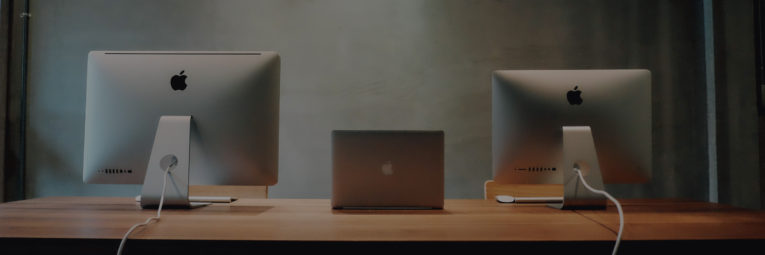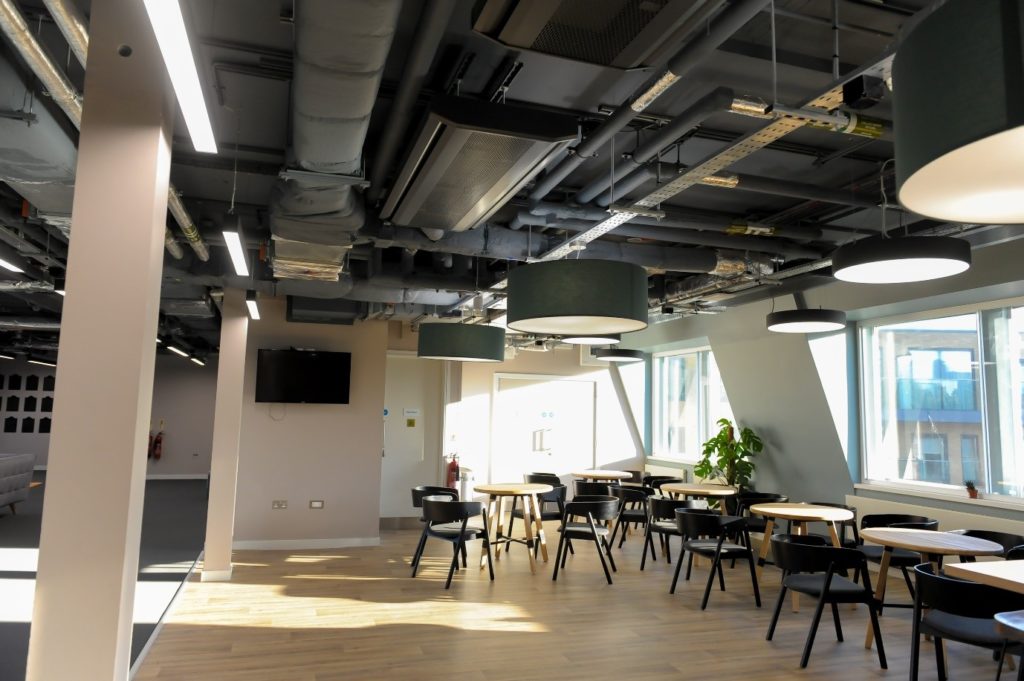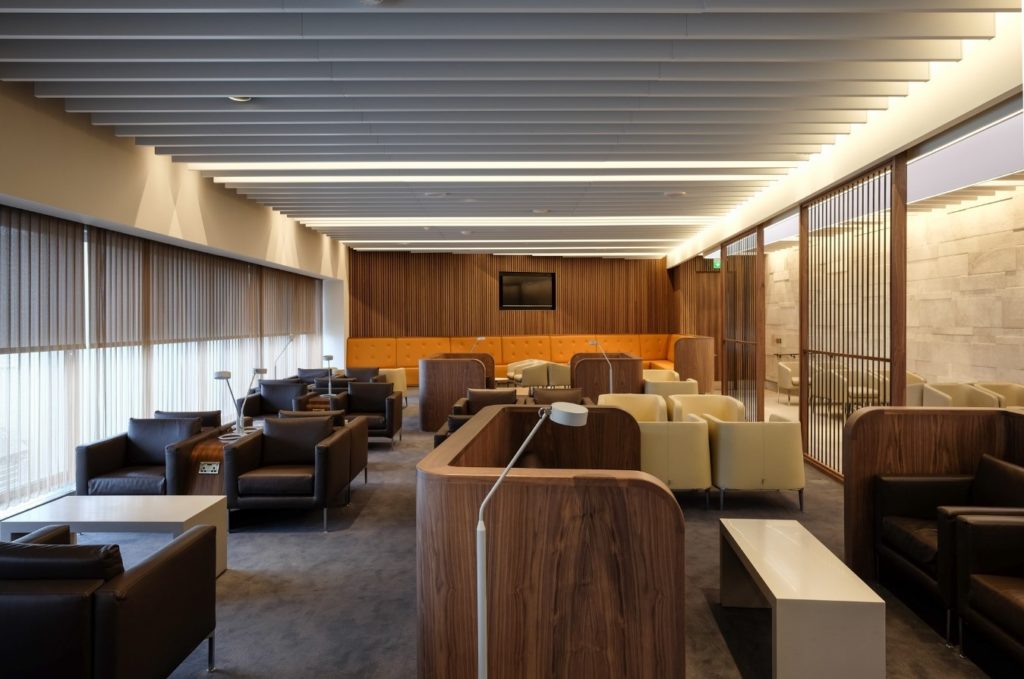
As many of us start to return to the office, there is a realisation that working life will never be quite the same as it used to be. With more than 40 percent of the global workforce thinking about leaving their current employer in 2021, an intelligent approach to a new hybrid working model will be vital for attracting and retaining the best talent.
We’re not talking about gimmicks like free ice cream, cash bonuses and rooftop gardens complete with beehives that some companies have decided to offer their employees. We’re referring to something altogether more concrete: the offices that employers are now busy trying to tempt their staff back into.
Working from home has suited many individuals who managed to remain as productive as they were before the pandemic struck. But some have suffered from the isolation and the daily distractions at home. Perhaps, the perfect solution, moving forward, is an office that makes people feel as relaxed as they are when working from home, but without the surrounding chaos.
As some workers will continue to be at home while others are in the office, flexible workspaces which allow for one-on-one video calls or larger collaborative meetings will be required. So, what will this mean for office lighting?

As employers think how best to reappoint their office space for what lies ahead, creative and sympathetic lighting has a significant part to play in a successful switch to hybrid working.
Some employers have cut down on their office space and have reconfigured it into multiple zones. Others have decided to downsize and now find themselves in a completely different building. These new offices need to be specifically designed, and lit, for flexible working. This period of transition also presents a perfect opportunity to introduce more energy-efficient lighting solutions, helping companies meet their own carbon reduction targets.
The likelihood is that more offices will embrace flexible working spaces, giving a greater number of employees the opportunity to hot desk. So, expect to see a deconstructed lighting response to the challenges of hybrid working. To suit this new working environment, we would advocate a combination of different lighting styles to delineate spaces visually, without having to use additional partitioning.
Well conceived, dynamically controlled lighting is not just nice-to-have, as inadequate lighting can have wellbeing consequences as well as being plain irritating.
More and more studies link the negative side effects of poor lighting with issues such as diabetes, depression, SAD, anxiety, cancer, and Alzheimer’s, as well as reducing the quality of sleep and contributing to obesity.
If an employee is coming into the office, it might well be because they need to collaborate with a larger number of people than would be suitable for an online meeting.
In larger meetings, one of the principal lighting considerations is to ensure that the faces of all participants are well lit. This can best be achieved using vertical illumination which needs to be applied correctly to avoid disability and discomfort glare, as both need to be considered in this case.
It is also critical to ensure the presenter in a meeting is lit correctly, without interfering with the use of projectors and other audiovisual equipment.

Collaboration and flexibility are the keywords of the office of the future. As such, a uniform array of modular fittings in the ceiling will no longer meet the brief. Design professionals need to respond to the change of use of offices, adopting layered lighting and greater lighting controls.
More flexible hybrid working will lead to the introduction of different ‘zones’ within offices, breakout spaces for small meetings or impromptu discussions. To complement this, more informal lighting with a wider variety of luminaire types is desirable. Small meeting spaces have very different lighting requirements to large ones.
You also have the opportunity to make the lighting in these shared zones configurable for added visual comfort and wellbeing. The colour temperature (CCT), direction and volume of light can all easily be altered from one meeting to the next, to accommodate user preference.
Warm, informal lighting in areas used for coffee and lunch breaks is another good idea that will help promote relaxation and reduce stress.

With different employees in the office on different days, lighting should be connected to the workstation and easily adjustable, to suit the person currently sitting there. Giving individuals control, either by localised switches or device based applications, will help them work more effectively.
We have also noticed an increase in popularity for lower-level ambient lighting, supplemented with task lighting related to the individual desk or working zone. Desk lighting gives employees control over how much light they use for tasks and help people focus on their work, undisturbed by the surroundings. This approach in our experience also generally delivers a lower lighting power density solution, helping achieve a lower carbon footprint.
Desk lighting can be complemented by additional accent or feature lighting, providing visual interest and creating a wellbeing-focused, cohesive design to the lighting scheme.
So, as employers focus on tempting workers back into the office and, above all, to stay with the company, it’s apparent that professionally planned lighting has a big role to play. If you’d like to know how you could enhance your own office lighting for hybrid working, why not give our friendly experts a call on 01926 640 366?
I can rely on Phi being proactive on issues arising.
Relationships & Empathy
Phi understands us, our scope and our limitations.
Relationships & Empathy
Phi delivers a good solution, which is more than just a product. Their service is good, they talk through schemes with us and there is more to it than just a catalogue.
Technical Skills
The main asset of Phi is people and the high level of technical backup they provide. For example with their competitors I meet a salesman and not a technical salesman. This difference is crucial.
Technical Skills
Good quality products at a reasonable price.
Price
Phi is not the cheapest supplier but they offer quality architectural fittings.
Price
Phi’s personal service is appreciated and differentiates them.
Service
During completed projects, we have been happy with the performance and communication from Phi. I can rely on Phi being proactive on issues arising.
Service
I see Phi for architectural led office foyers, reception areas, bespoke spaces in office blocks and good architectural lighting for commercial developments
Spaces
Appropriate for the commercial sector in particular and other places where there is a modern style requirement as befits their current product range.
Spaces
Phi is most suited to commercial offices, associated rooms and educational buildings.
Spaces
Phi delivers a good solution, which is more than just a product.
Perception & Image
We are project focused; there are lots of people in the industry but it is questionable whether they want to help and support properly. Why change to someone who may let you down, you stick with the best.
Perception & Image
Phi is not mainstream but a specialist niche architectural supplier who is a little bit different.
Perception & Image
Phi offer support, which sets them apart.
Perception & Image
Phi is a strong quality architectural supplier, giving good advice where we are lacking.
Perception & Image
Phi offer a great level of experience, supply, service and back up.
Perception & Image
I can rely on Phi being proactive on issues arising.
Relationships & Empathy
Phi understands us, our scope and our limitations.
Relationships & Empathy
Phi delivers a good solution, which is more than just a product. Their service is good, they talk through schemes with us and there is more to it than just a catalogue.
Technical Skills
The main asset of Phi is people and the high level of technical backup they provide. For example with their competitors I meet a salesman and not a technical salesman. This difference is crucial.
Technical Skills
Good quality products at a reasonable price.
Price
Phi is not the cheapest supplier but they offer quality architectural fittings.
Price
Phi’s personal service is appreciated and differentiates them.
Service
During completed projects, we have been happy with the performance and communication from Phi. I can rely on Phi being proactive on issues arising.
Service
I see Phi for architectural led office foyers, reception areas, bespoke spaces in office blocks and good architectural lighting for commercial developments
Spaces
Appropriate for the commercial sector in particular and other places where there is a modern style requirement as befits their current product range.
Spaces
Phi is most suited to commercial offices, associated rooms and educational buildings.
Spaces
Phi delivers a good solution, which is more than just a product.
Perception & Image
We are project focused; there are lots of people in the industry but it is questionable whether they want to help and support properly. Why change to someone who may let you down, you stick with the best.
Perception & Image
Phi is not mainstream but a specialist niche architectural supplier who is a little bit different.
Perception & Image
Phi offer support, which sets them apart.
Perception & Image
Phi is a strong quality architectural supplier, giving good advice where we are lacking.
Perception & Image
Phi offer a great level of experience, supply, service and back up.
Perception & Image
Phi Lighting Ltd
Unit 9, Brook Business Park, Brookhampton Lane, Kineton, CV35 0JA
Phone: +44 (0)1926 640 366Fax: +44 (0)1926 641 747Email: quotes@phi-lighting.com
Phone: +44 (0)203 875 6484
